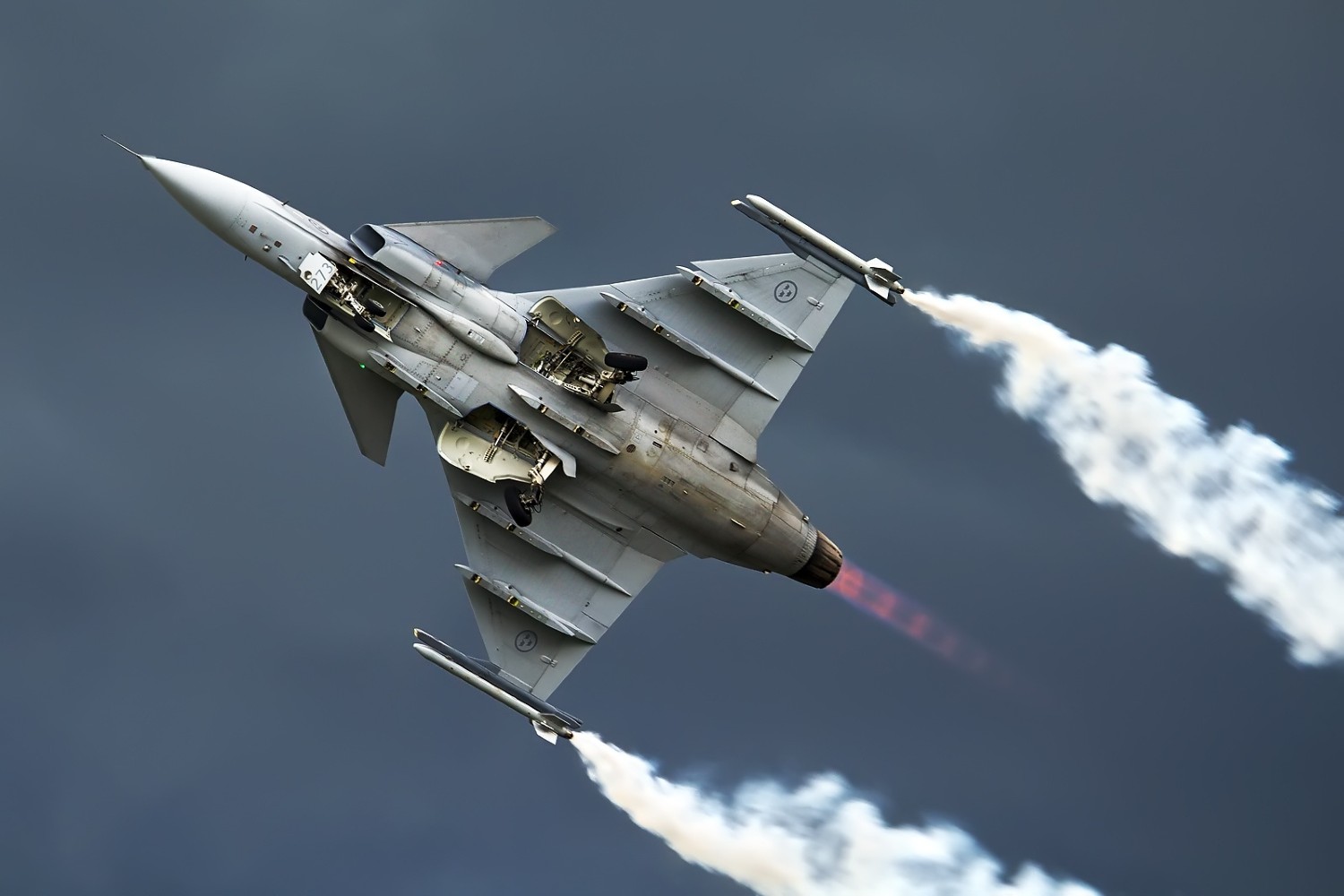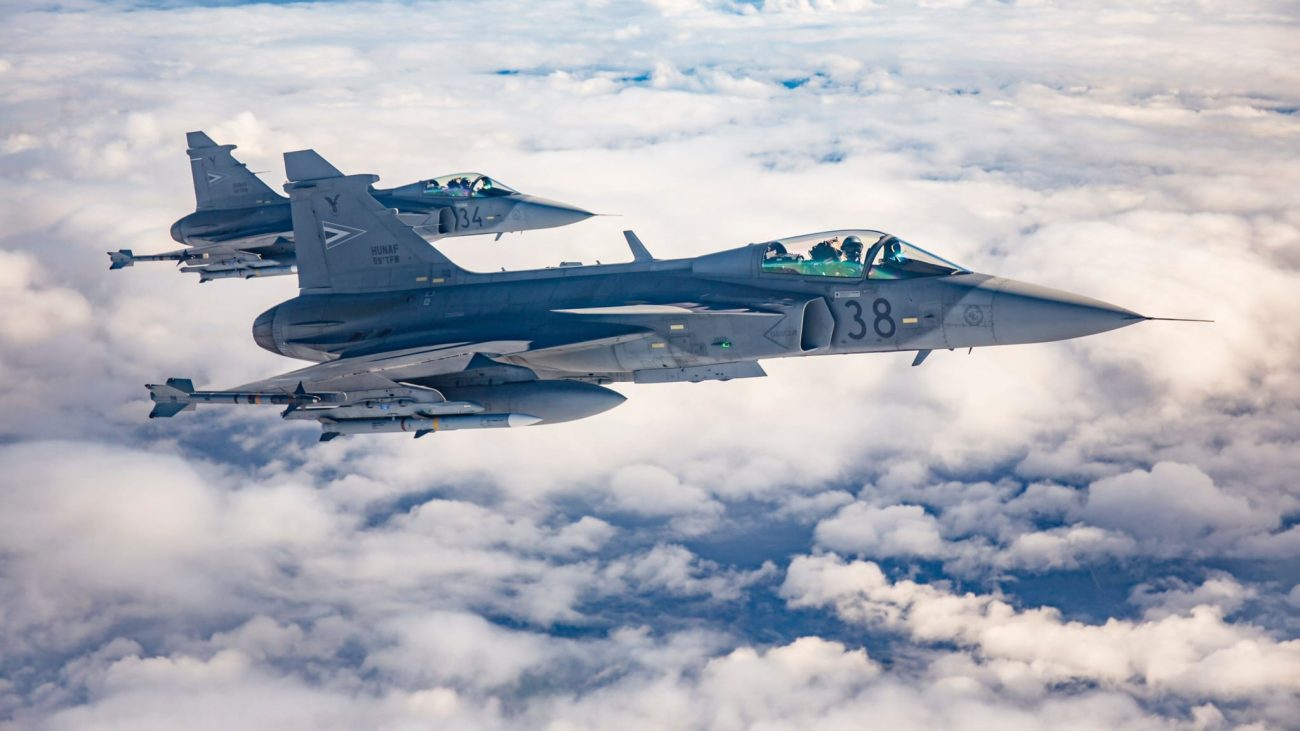With an eye on modernizing its aging air fleet, Thailand is contemplating the purchase of new fourth-generation fighter jets. It has two choices: US-origin F-16 fighters manufactured by Lockheed Martin or the Swedish SAAB Gripens.
Royal Thai Air Force (RTAF) chief Air Chief Marshal Phanpakdee Pattanakul told the media that the Lockheed Martin F-16 Block 70, the most advanced variant of the combat-hardened jet, and the latest Saab JAS 39 Gripen E had both been shortlisted as the service finalists.
According to ACM Phanpakdee, the RTAF has reduced the pool of potential aircraft to the F-16 and Gripen, both of which are currently in the RTAF inventory, after the force’s original plans to purchase F-35 aircraft from Lockheed Martin were denied.
In November 2022, the service announced that it had placed a request with the United States to acquire two F-35A fighter jets, the smallest order request in history. However, by the summer of last year, the US had rejected the request on the rationale that the Thai air force might not be adequately prepared in terms of infrastructure facilities to accommodate F-35 fighters.
Specifically, concerns were raised regarding airbase security, airfield capabilities, maintenance infrastructure, and the availability of trained pilots and other essential personnel.
The lid was closed on the potential and rather ambitious acquisition of the fifth-generation stealth fighter jets that have been procured by another Southeast Asian country, Singapore.
Thailand placed an order for Gripen C/Ds in 2008 and received the first six in February 2011. Saab delivered a second batch as scheduled in 2013 to finish equipping 701 Squadron in Surat Thani. The aircraft is mainly used for air defense roles and works in tandem with two Saab 340 airborne early warning aircraft.
The RTAF also maintains several American-made aircraft, including F-16 and F-5 jets, some of which have been in service since the late 1980s. Given the aging nature of a portion of its F-16 fleet, Thailand intends to replace some of these older aircraft.
The Thai Air Force, which now consists of seven squadrons, plans to decommission three of its fighter squadrons, each with 12 jets, because the age of these aircraft has made their operation unsustainable and expensive for the country.
The air chief said that the RTAF will need to replace aging aircraft and maintain its fighter strength to facilitate training and operations and keep up with the number of fighters maintained by the kingdom’s neighbors.
While rejecting its request for the F-35, the US has made an alternative proposal: it pitched the F-16 Block 70 to Thailand. The F-16 Block 70/72, also known as the F-16V, is the most advanced and highly sought-after version of this fighter aircraft.
The Block 70/72 is distinguished by its advanced avionics, an APG-83 AESA radar, a modernized cockpit, conformal fuel tanks, an Automatic Ground Collision Avoidance System, a center pedestal display that offers tactical imagery on a high-resolution 68-inch screen, and an extended structural service life of 12,000 hours.
“We’re confident the F-16 Block 70/72 will complement the RTAF’s existing F-16 fleet and deliver the advanced 21st-century security capabilities and performance needed to address Thailand’s most pressing defense requirements,” a Lockheed spokesperson had earlier told Defense News.
On the other hand, after losing to the Lockheed Martin F-35 in several contracts across Europe, Swedish manufacturer Saab has now offered its most advanced Gripen-E to help the RTAF replace its archaic and untenable F-16s.
Experts believe that it will be a breakneck contest between the two fighters, considered the best in their generation globally. In November last year, Robert Bjorklund, Gripen sales executive in Saab’s Business Area Aeronautics emphasized that The RTAF’s present Gripen infrastructure and operational philosophy can be enhanced by Gripen E.

He further said that due to the separation of its tactical and vital systems, the Gripen E is also simple to upgrade in the future. The former would not be impacted by any improvements given to the latter. SAAB has been grappling with missed opportunities and a waning international presence as rivals like the F-35 and Rafale dominate the market. So, venturing into the Southeast Asian region appears to be a rewarding decision.
Interestingly, the United Kingdom has unexpectedly supported one of the two jets under consideration in Thailand: the Gripens.
The UK Backs Gripen-E Jets
Saab announced on March 20 that the UK government is supporting the proposal to sell Thailand the Gripen E.
After UK Secretary of State for Foreign, Commonwealth, and Development Affairs David Cameron shared a photo of himself on the same day, boarding a Royal Thai Air Force (RTAF) Gripen C while on a trade visit, Saab stated that Sweden and the UK would work together to sell the Gripen E to the Far Eastern nation.

The Swedish manufacturer wrote on Platform X, “Sweden and the UK stand side-by-side in offering the very best future fighter capability for the Royal Thai Air Force.”
“Thailand is one of the biggest economies in Southeast Asia,” Cameron stated about the UK’s support of Saab’s application. The value of trade with [the UK] is approximately GBP6 billion [USD7.62 billion] annually. I wish to expand upon that. Together, we can advance jobs, growth, and security throughout the area and in the UK.
The UK helped build this jet ⬇️
A collaboration between the UK, Sweden and the USA, supplying Gripen Fighters will strengthen the Royal Thai Air Force and create jobs back home in the UK. pic.twitter.com/xXgexiFBkg
— Foreign, Commonwealth & Development Office (@FCDOGovUK) March 21, 2024
Although the Gripen is perceived as a Swedish aircraft, Saab has revealed that 25% of each aircraft is produced by UK-based businesses. The Leonardo UK active electronically scanned array (AESA) radar and the Martin-Baker ejection seat are examples of this.
After a spate of losses that have come as a setback to SAAB, a potential deal with Thailand could prove to be its resurgence. The US refusal to sell the F-35 to Thailand could eventually prove to be the saving grace for the Swedish aircraft that have fewer buyers than anticipated.
- Contact the author at sakshi.tiwari9555 (at) gmail.com
- Follow EurAsian Times on Google News




